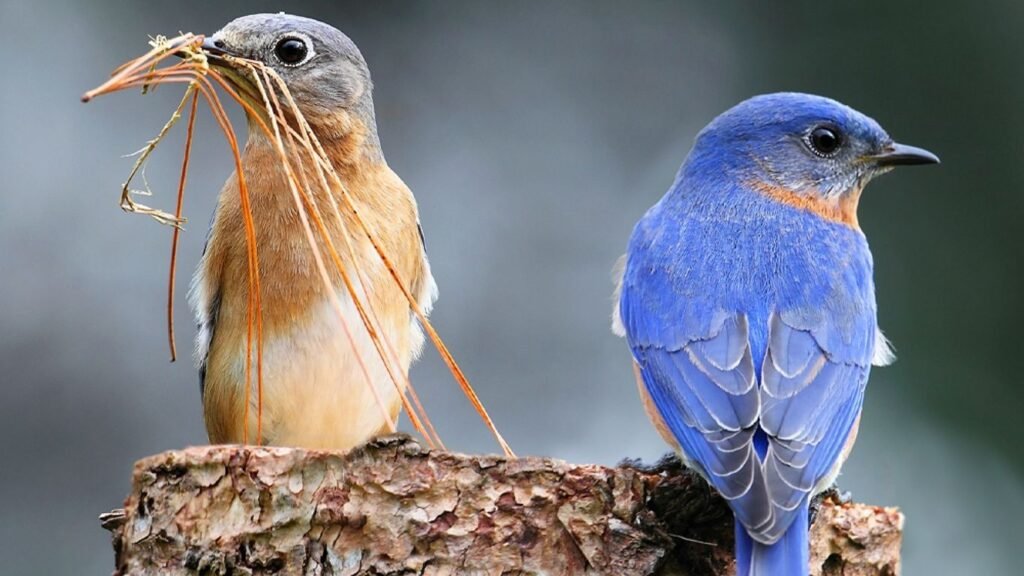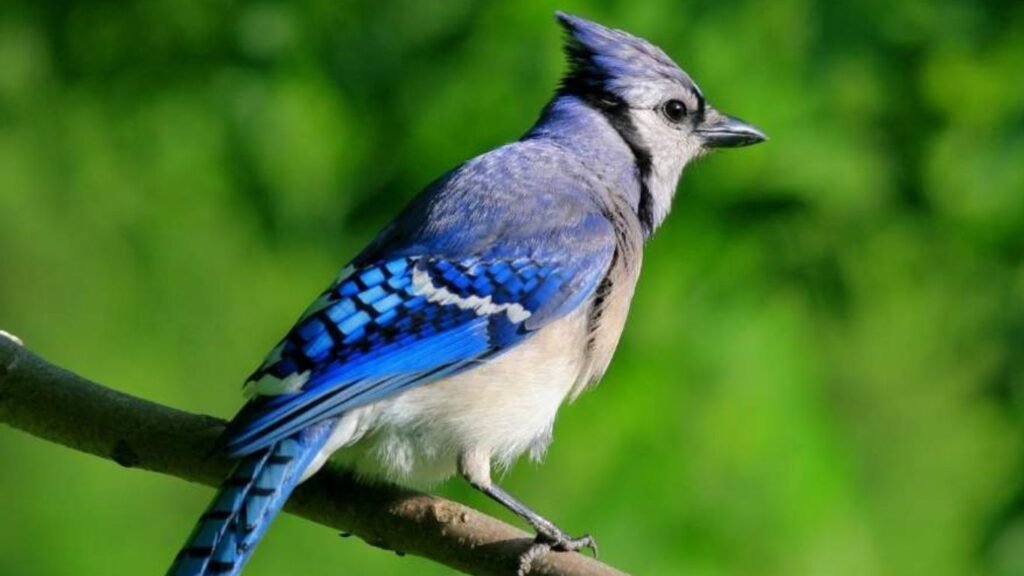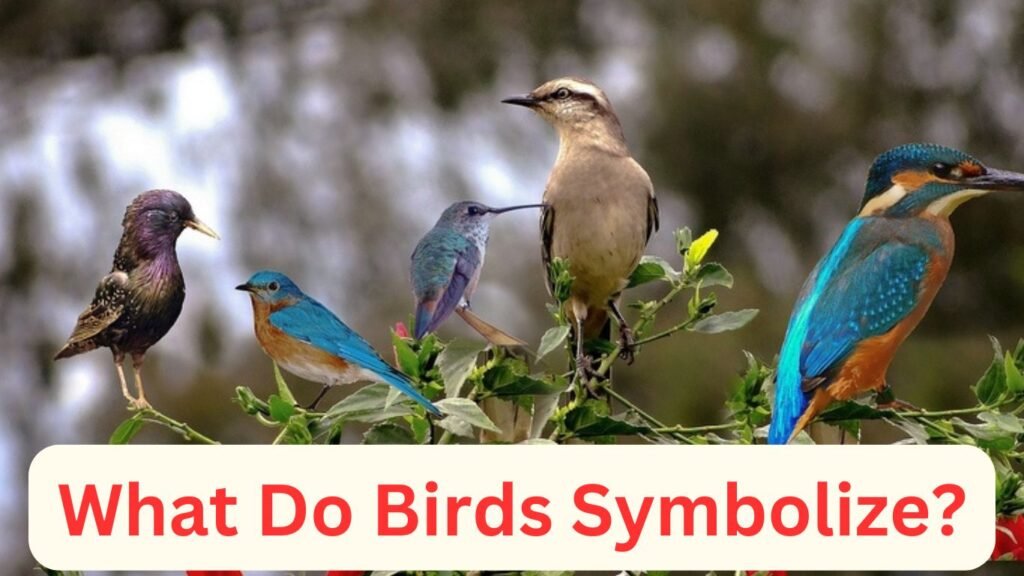Birds have captured human imagination for centuries. Their ability to soar through the skies has made them powerful symbols in many cultures. Birds often represent freedom, spiritual growth, and the connection between earth and sky. Different bird species carry unique meanings. Eagles symbolize strength and power, while doves are linked to peace and love.
Owls are associated with wisdom, and hummingbirds represent joy and healing. These meanings can vary across cultures and traditions. People find inspiration in bird symbolism for various reasons. Some see birds as messengers or omens. Others draw meaning from bird appearances in dreams or daily life. Bird tattoos and artwork are popular ways to express personal values through avian imagery.
Table of Contents
ToggleWhat Do Birds Symbolize: Cultural Significance of Birds
Birds hold deep meaning in cultures worldwide. They appear in stories, art, and beliefs across history. Different birds represent various ideas and qualities to people.
Ancient Mythologies and Birds
In ancient Egypt, the ibis symbolized Thoth, the god of wisdom. Greeks linked owls to Athena, the goddess of knowledge. Norse myths tell of Odin’s ravens bringing him news from across the world.
Many Native American tribes saw eagles as sacred messengers to the spirit world. In Hinduism, Garuda, a bird-like creature, serves as Lord Vishnu’s mount. These examples show how birds played key roles in explaining the world and connecting humans to divine forces in many cultures.

Birds in Literature
Writers often use birds to represent ideas or emotions in their works. In William Shakespeare’s plays, birds appear as omens or symbols. Ravens in Edgar Allan Poe’s poetry create a dark, mysterious mood.
“To Kill a Mockingbird” by Harper Lee uses the mockingbird as a symbol of innocence. “Jonathan Livingston Seagull” by Richard Bach tells a story of personal growth through a seagull’s journey. Birds in books can stand for freedom, hope, or danger. They help authors express complex ideas in a simple, relatable way.
Birds in Art and Symbolism
Artists use birds in their work to convey meaning. Doves often represent peace in paintings and sculptures. Eagles appear on flags and seals as symbols of power and freedom. In Chinese art, cranes symbolize long life. Japanese artists depict phoenixes to show rebirth. Pablo Picasso’s famous “Dove of Peace” became a worldwide symbol.
Religious art features birds too. Christian art shows the Holy Spirit as a dove. In Islamic art, birds can represent the human soul. These artistic uses of birds help people understand abstract concepts through familiar images.
Birds as Symbols of Freedom
Birds often represent freedom in art, literature, and culture. Their ability to soar through the sky and travel long distances makes them powerful symbols of independence and limitless possibilities.
The Eagle and Independence
The eagle stands out as a key symbol of freedom. Many countries use eagles on flags and emblems to show strength and liberty. The bald eagle is the national bird of the United States. It represents freedom from tyranny and the right to self-rule. Eagles build nests high up in trees or on cliffs. This gives them a wide view of their surroundings.
Their keen eyesight lets them spot prey from far away. These traits link eagles to ideas of watchfulness and protection of freedom. In Native American cultures, eagles are sacred birds. They’re seen as messengers between humans and the spirit world. Their feathers are used in important ceremonies. This connects eagles to spiritual freedom.
Migratory Birds and the Concept of Boundlessness
Migratory birds fly vast distances each year. They cross oceans and continents without regard for human borders. This makes them symbols of boundless freedom. Birds like Arctic terns travel from pole to pole every year. They cover over 44,000 miles annually. This incredible journey shows nature’s drive for freedom of movement.

Spiritual and Religious Representations
Birds play important roles in many spiritual and religious traditions. They often symbolize divine messages, transcendence, and connections between earthly and spiritual realms.
Christianity and the Holy Spirit
In Christianity, birds have deep symbolic meaning. The dove represents the Holy Spirit, peace, and purity. It appears in key Bible stories like Noah’s ark and Jesus’ baptism. White doves are used in Christian art to show God’s presence. They symbolize hope, new beginnings, and God’s love.
Eagles also have special meaning in Christianity. They represent strength, courage, and renewal. The Bible compares God’s protection to an eagle’s wings. Some Christians see birds as signs from heaven or guardian angels. Their sudden appearance may be viewed as divine guidance or comfort.
Russia is home to several majestic types of eagles, including the Golden Eagle and the Imperial Eagle. These species are commonly found in the forests and steppes, where their keen hunting skills and powerful presence symbolize strength and freedom. Learn more about the diverse types of eagles in Russia and their habitats to explore their role in the region’s rich wildlife heritage.
Birds in Native American Spirituality
Many Native American tribes see birds as sacred messengers. They believe birds carry prayers to the spirit world and bring back answers. Eagles are highly revered. They represent wisdom, strength, and spiritual power. Eagle feathers are used in important ceremonies and rituals.
Ravens and crows symbolize magic, transformation, and creation in some tribes. They appear in many Native American stories and myths. Hummingbirds represent joy, healing, and love in some cultures.
Their ability to hover and fly backwards is seen as magical. Some tribes have clan systems based on birds. Members of a bird clan may see that bird as a spiritual guide and protector.
Birds Representing Human Traits
Birds often mirror human qualities in stories and myths. People see parts of themselves in how birds act and look. This gives birds special meanings across many cultures.
Owls and Wisdom
Owls are known as wise birds. Their big eyes and quiet nature make them seem smart. In ancient Greece, the owl was linked to Athena, the goddess of wisdom. Many cultures think owls can see things others can’t.
People often use owl images to show knowledge or learning. Schools and libraries sometimes have owl mascots. The phrase “wise old owl” is common in stories. Owls hunt at night and have excellent hearing. This makes them seem alert and aware. Their ability to turn their heads almost all the way around adds to their all-knowing image.
Peacocks and Vanity
Peacocks are symbols of pride and beauty. Their colorful tail feathers catch the eye. When a male peacock fans out his tail, it’s a stunning display. This showy behavior reminds people of vanity in humans. Peacocks seem to strut and show off. In some stories, they represent too much pride.
The term “proud as a peacock” describes someone who is very pleased with themselves. Peacocks appear in art and fashion to show luxury and glamour. Their feathers were once used by royalty as decorations.
Robins and Renewal
Robins are tied to new beginnings and spring. In many places, seeing a robin is the first sign that winter is ending. This makes them symbols of hope and fresh starts. The bright red breast of a robin stands out against snow. It’s like a spark of life in the cold. Robins are often among the first birds to lay eggs in spring. This connects them to the idea of rebirth.
In some cultures, robins are thought to bring good luck. Their cheerful song adds to their image of happiness and optimism. People often feel joy when they spot a robin, linking the bird to positive feelings and new chances.
Birds as Harbingers of Change
Birds often signal shifts in natural cycles and human circumstances. Their behaviors and appearances can hint at upcoming changes in weather, seasons, or life events.
Cultural Beliefs About Birds and Change
Many cultures view birds as messengers of change. In some Native American traditions, seeing an eagle means a big life shift is coming. Ancient Romans thought birds could predict the future. They watched how birds flew and ate to guess what would happen next.
Some people believe certain birds bring good or bad news. A dove might mean peace is coming. A crow could warn of tough times ahead. In Japan, seeing a hawk on New Year’s Day is lucky. It means the year will be full of good things.
Interpreting Bird Behavior
Birds’ actions can signal changes in nature. When birds fly south, it means winter is near. If they return early in spring, warm weather may come soon. Seabirds flying inland might mean a storm is coming.
Some think bird calls have meaning too. An owl hooting during the day could mean something unusual will happen. Sparrows chirping more than normal might mean rain is on the way. Watching for changes in local bird populations can also give clues. If new bird types show up, it could mean the climate is shifting. Fewer birds might signal problems in the ecosystem.
Birds in Superstitions
Birds play a big role in superstitions around the world. People often see them as signs of good or bad luck. Their actions and appearances are thought to predict events or carry messages.
Omens and Predictions
Many believe birds can foretell the future. A woodpecker knocking on a house is said to warn of death in some cultures. White birds or crows flying into windows are also seen as bad signs. Some birds bring good news. Albatrosses are lucky for sailors. They can show the way to land or point to good winds.
Spotting certain birds might mean money or love is coming. People watch how birds act to guess what will happen. The way they fly or the sounds they make can be important. Even finding a feather can be meaningful to some.
Cross-Cultural Superstitions involving Birds
Bird superstitions vary across cultures. In some places, birds are thought to carry souls or connect with spirits. Seeing a cardinal might mean a loved one is visiting from heaven. Pigeons tapping windows can mean different things in different areas. It might be a warning or a greeting from the spirit world. The type of bird often changes the meaning.
Some cultures see birds as guardians. Others fear them as bringers of bad luck. The same bird can mean opposite things depending on where you are. Ravens are wise in some stories but scary in others. Birds in the house have special meanings too. Some think it means a spirit is there. This could be good or bad, depending on the bird and the beliefs of the people.
Conservation and Symbolism
Birds serve as powerful symbols in conservation efforts. Their iconic status helps raise awareness about environmental issues and inspires action to protect habitats and species.
Endangered Birds and Environmental Awareness
Many endangered bird species act as ambassadors for conservation. The California condor, with only 27 left in the wild in 1987, became a symbol of species recovery. Its population has now grown to over 400 birds. The whooping crane represents wetland preservation efforts. Its numbers increased from just 15 in 1941 to around 500 today.
Bald eagles symbolize both American patriotism and environmental protection. Their comeback from near-extinction due to DDT use sparked public interest in controlling harmful pesticides. The dodo bird, extinct since the 17th century, serves as a cautionary symbol of human-caused extinctions.
Symbolic Species Conservation Efforts
Some birds hold special cultural significance that aids their protection. In India, the peacock’s status as the national bird helps safeguard it from poaching. Native American tribes revere eagles, supporting conservation of these raptors.
The Atlantic puffin became Iceland’s unofficial mascot. Its image on coins and in tourism ads boosted efforts to protect seabird colonies. New Zealand’s flightless kiwi bird is a national symbol. This spurred habitat protection and captive breeding programs to save the endangered species.
Global campaigns often use charismatic birds as mascots. WWF’s panda logo expanded to include other species like penguins. This helps draw attention to Arctic and Antarctic conservation needs.
Frequently Asked Questions about What Do Birds Symbolize
What do birds symbolize in general?
Birds often symbolize freedom, spirituality, and the connection between the physical and divine realms. Their ability to fly is associated with transcendence and the pursuit of higher understanding.
What do specific birds symbolize?
Doves: Love, peace, and spirituality (often associated with the Holy Spirit in Christianity).
Owls: Wisdom, mystery, and intuition.
Eagles: Strength, courage, and vision, particularly in Native American cultures.
Crows: Intelligence, transformation, and adaptability.
Sparrows: Humility, teamwork, and simplicity.
Peacocks: Beauty, pride, and renewal.
What does it mean to dream of birds?
Dreams involving birds can represent freedom, aspirations, or personal transformation. A bird flying freely may symbolize independence, while a bird in a cage could indicate feelings of restriction or confinement
Why do birds appear in myths and art?
Birds are often seen as messengers or symbols of divine intervention in mythologies and religious art. For example, ravens in Norse mythology represent wisdom, while doves are central to Christian iconography
What does it mean if I keep seeing a particular bird?
Repeated sightings of a specific bird can symbolize messages or lessons connected to its traits. For instance, seeing an owl may encourage introspection, while spotting a robin might signify new beginnings.
Do birds have cultural significance?
Yes, different cultures interpret birds differently. For example, in Hinduism, peacocks symbolize immortality and beauty, while Native American traditions often view eagles as sacred beings linking the physical and spiritual worlds.


